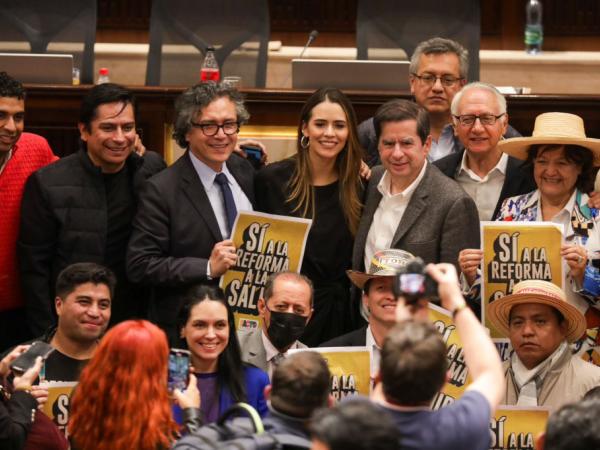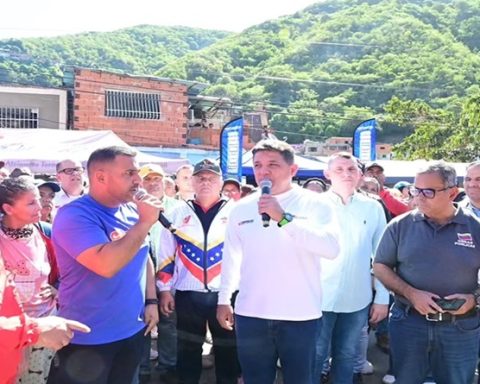Yes
and knows that he Marxist philosopher and historian Elí de Gortari participated in the student movement of 1968 and was imprisoned in Lecumberri until 1971; He also supported the 1966 movement at UNAM that led to the resignation of Rector Chávez and made a proposal for university reform to democratize the university. Also well known is the importance that De Gortari had in the 1963 student movement at the Michoacana University of San Nicolas de Hidalgo, where he had been rector since 1960, a position from which he was dismissed by right-wing forces, the Army and the then governor of Michoacán. .
However, other episodes of De Gortari’s career with the student movement still remain to be narrated, such as the failed attempt by the students of the Autonomous University of Guerrero to make him their rector after he left Nicolaíta; But above all, his participation in the student movement when he was a student has remained obscure, a stage from which I will share an episode with you below.
In the second half of the 1930s, the Mexican Communist Party (PCM), guided by the policy of the VII Congress of the Communist International, abandoned open confrontation with the Mexican government and moved from the slogan neither with Calles nor with Cárdenas
to support the government headed by Lázaro Cárdenas. This led, in the union sphere, to the communists leaving the leadership of the Confederation of Mexican Workers (CTM) in the hands of Lombardo Toledano and his associates, in order to maintain the unity at all costs
.
The subordination of mass organizations to the Mexican State, a process in which the communists collaborated, was expressed among the youth and the student movement through the unification of left-wing youth organizations. The first step on this path was taken with the creation of the Unified Socialist Youth of Mexico (JSUM), in 1936, to which the Federation of Young Communists of the PCM joined. The next step was the creation of the Confederation of Mexican Youth (CJM), in 1939, which was an organization at the service of the Mexican government. The regrouping of left-wing youth organizations coincided with the period in which the then Autonomous University of Mexico (today UNAM) was dominated by right-wing sectors that opposed socialist education.
This was the context in which the PCM had to guide the participation of young communists in the student and youth movement. By then the PCM had the valuable experience of the FJC, among whose members it had included José Revueltas, Enrique Ramírez y Ramírez, who became responsible for the JSUM press commission, and Carlos Sánchez Cárdenas, who was responsible of the PCM’s work for the university. In fact, in 1938, when Luis Chico Goerne left the position of rector to be assumed by Gustavo Baz, Sánchez Cárdenas, who had a close relationship with the outgoing rector, participated in the commissions created by the University Council to reorganize the functioning of the university. .
In 1938 Elí de Gortari was 20 years old, he was a student and a communist militant, and as such he sought to contribute to the work of the PCM at the university, and he prepared with Pedro Rojas and Narciso Bassols (son) a Study on Higher Education in Mexico
a document that he delivered to the PCM leadership in March 1938. The “Study…” proposed that the PCM collaborate with the government of Lázaro Cárdenas by encouraging the university to join the progressive provisions of the government; but he questioned that the young communists reduced their political work to work within the JSUM, and proposed the creation of a communist university directory with teachers and students, with the aim of strengthening the positions of the communists within the JSUM. The study of the three young communists was ignored and the PCM reaffirmed the policy of Sánchez Cárdenas y Ramírez y Ramírez; This meant continuing to work through the JSUM and not creating a parallel group of communists at the university.
The debate on the university question created friction between the Gortarist trio and those responsible for the PCM’s university work, who harassed De Gortari and his two friends, to the point of accusing them of being Trotskyists. The seriousness of the accusation led the three young people to address a letter to the political bureau (BP) of the PCM in June 1938, requesting clarification: Either we are Trotskyists or we are communists
. The letter added: If the party admits that we have any deviation, let it clearly show it to us and, immediately, without stopping for a moment, we will automatically consider ourselves separated from the party.
. If they were not considered Trotskyists, they asked that Sánchez Cárdenas be assigned to the honor and discipline commission for the false accusations he made about them. Although Elí de Gortari, Narciso Bassols and Pedro Rojas continued in the match, it is not known if Sánchez Cárdenas was sanctioned.
The helplessness of not being able to change the decision of the PCM and the desire for redress for the accusation of Trotskyism found an outlet in the fantasy of the young communists. The result was the writing of a play in which the PCM leadership approved the Study…
of De Gortari as policy for the student movement, which allowed them to mock Sánchez Cárdenas. In the work, the PCM rectified its university policy thanks to the fact that De Gortari’s arguments were supported by Lenin himself, not because Lenin’s words were referred to, but because he had revived and, like Christ, appeared among his faithful. believers, in this case gathered in a session of the political bureau of the PCM.
The fantasy of three young communists and the pen of Eli de Gortari revived Lenin in a play. In what way? What did Lenin say? I will tell this on the next occasion.
* ENAH historian
















